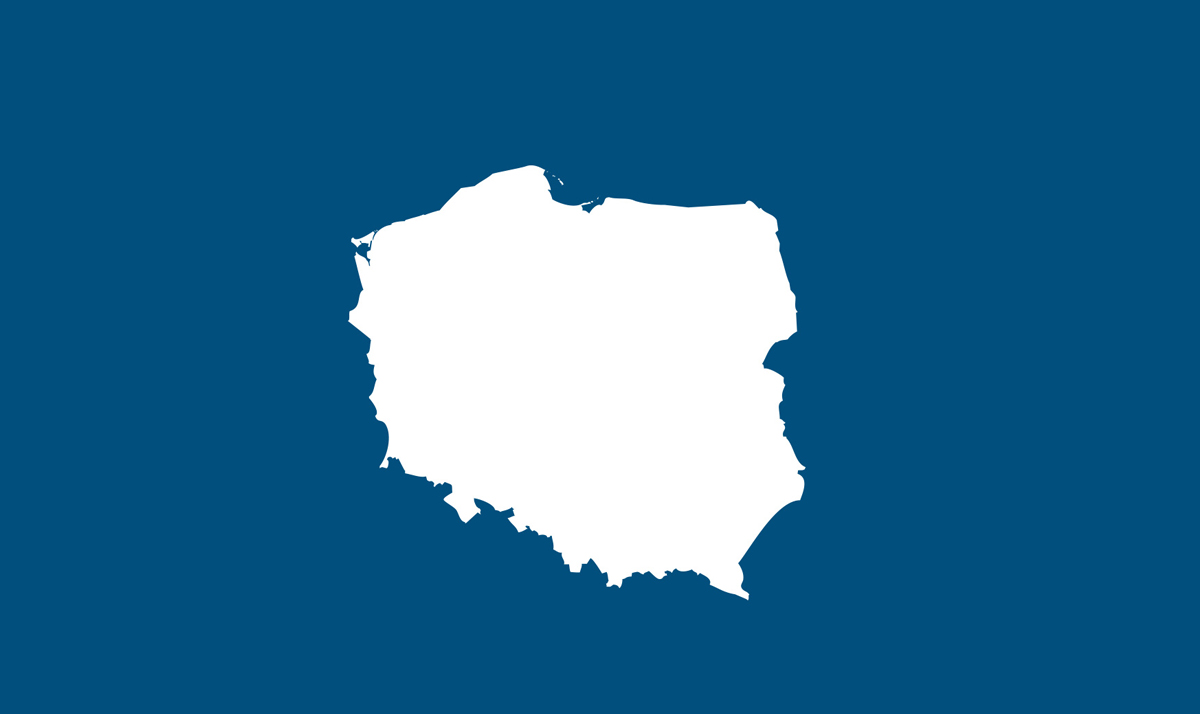Poland
Poland became the 20th largest economy in the world in 2025. Following the downturn in 2023 caused by the war in Ukraine, Poland’s economic growth has been remarkable and is expected to remain strong in the short term.
| Forecasts | ||||||||
|---|---|---|---|---|---|---|---|---|
| 2020 | 2021 | 2022 | 2023 | 2024 | 2025 | 2026 | 2027 | |
| GDP growth (%) | -2.0 | 7.0 | 5.6 | 0.2 | 3.0 | 3.2 | 3.1 | 2.9 |
| CPI inflation (%)* | 3.6 | 5.2 | 13.2 | 10.8 | 3.7 | 3.8 | 2.8 | 2.7 |
| Fiscal balance (% of GDP) | -6.9 | -1.7 | -3.4 | -5.3 | -6.6 | -6.4 | -6.1 | — |
| Public debt (% of GDP) | 56.6 | 53.0 | 48.8 | 49.5 | 55.3 | 58.0 | 65.3 | — |
| Reference rate (%)* | 0.5 | 0.4 | 5.3 | 6.5 | 5.8 | 5.2 | 3.9 | 3.5 |
| Exchange rate (PLN/USD)* | 3.9 | 3.9 | 4.5 | 4.2 | 4.0 | 3.6 | 3.7 | 3.6 |
| Current balance (% of GDP) | 2.9 | -1.7 | -3.1 | 2.3 | 0.5 | -0.7 | -0.8 | -0.9 |
| External debt (% of GDP) | 58.3 | 53.1 | 53.5 | 51.1 | 49.7 | 51.5 | 52.3 | 52.2 |
|
Note: * Annual average. Source: CaixaBank Research, based on data from Eurostat and Refinitiv. {Prev} |
||||||||
Outlook
Poland became the 20th largest economy in the world in 2025. Following the downturn in 2023 caused by the war in Ukraine, Poland’s economic growth has been remarkable and is expected to remain strong in the short term. The main driver of growth is domestic demand, which is continuing to gain momentum thanks to a strongly performing labour market, with a low unemployment rate and sustained wage growth. Additionally, public investment generated through the RRF (Recovery and Resilience Facility, constituting 75% of all NGEU funds allocated to Poland) will account for 1% and 3% of GDP in 2025 and 2026, respectively.
Economic policies
The Polish Central Bank has been pursuing an expansionary monetary policy since 2023. Since then, it has cut the interest rate by 225 bp to 4.5%, with 125 bp being cut in 2025 alone. This process has been supported by the marked slowdown in inflation since 2024, after Poland overcame the negative energy supply shock caused by the war in Ukraine. We expect prices to stabilise in 2026 and lie within the central bank’s target range of 1.5%-3.5%.
The Polish fiscal deficit remains high at 6.6% of GDP, above the 3% limit imposed by the EU’s fiscal rules. This is due to a sharp increase in defence spending (close to 5% in 2025, in programmes such as the Eastern Shield), increased investment in infrastructure (energy transition projects and transport networks) and higher social expenditure (pensions and wages of public sector workers). The government is expected to initiate a fiscal consolidation process and to boost revenue growth so that it exceeds activity growth, something that has not happened in recent years. However, issues such as the ageing population and procyclical nature of its fiscal policy are obstacles to achieving its fiscal targets. Public debt stood at 55.3% of GDP in 2024, although it is expected to exceed the 60% limit set for EU countries in 2026.
Exchange rate
In 2025, the zloty has appreciated by more than 10% against the dollar due to the uncertainty surrounding the US economy. In the coming years, despite the volatility being caused by geopolitical risks, we expect a further slight appreciation of the zloty fuelled by lower interest rates in the US and the disbursement of EU funds. Moreover, the Central Bank’s reserves have risen by nearly 20% over the year, fuelled by purchases of gold and foreign currencies.
Main risks
The balance of risks to Poland is skewed to the downside. Notable risks include:
- Geopolitical risk: Although Poland is a member of NATO, it is one of the countries that is most vulnerable to a potential attack by the Russian military due to its geographical location and staunch support for Ukraine. The government spent 4.2% of GDP on defence in 2024 and this percentage is expected to rise to 4.7% in 2025, making it the highest-spending NATO country. However, this will only contribute to 0.2% annual GDP growth, as most of the expenditure goes on imports or is lost due to structural weaknesses. Nevertheless, the Polish army is now twice the size it was in 2020, and domestic companies in the military sector are growing exceptionally fast.
- Commercial risk: Although Poland’s current account has been in surplus since energy prices eased, the tariffs imposed by the US are hitting the value chain of companies in Germany. Since Poland is one of Germany’s main trading partners, this is hampering Poland’s economic growth. On a more positive note, just 3% of Polish exports go to the US, minimising the tariffs’ impact on Polish growth.
- Political risk: The political situation in Poland is highly unstable. Prime Minister Tusk, from the centre-right reformist party Civic Platform, is seeing most of the laws that are proposed by parliament being vetoed by President Karol Nawrocki, from the right-wing nationalist Law and Justice party, who was elected last June. This situation is holding back the necessary structural reforms that would enable better absorption and speed of implementation of public investment and improved management of defence spending, which would lead to higher potential growth. Overall, Poland boasts good sectoral diversification but lacks proper regional diversification, something that could also be improved in the right political climate. The next legislative elections will be in 2027. Until then (or until there is an early election) this situation is far from being resolved.
Sovereign credit rating
| Rating agency | Rating* | Last changed | Outlook | Last changed |
|---|---|---|---|---|
 |
12/10/18 | Stable | 12/10/18 | |
 |
12/11/02 | Negative | 19/09/25 | |
 |
18/01/07 | Negative | 05/09/25 | |
| investment grade Speculative grade | ||||
